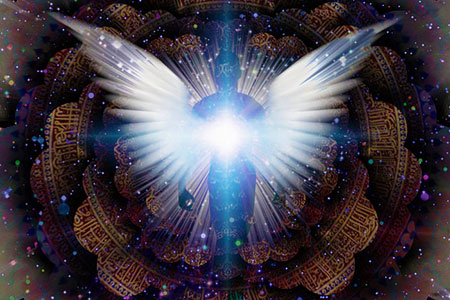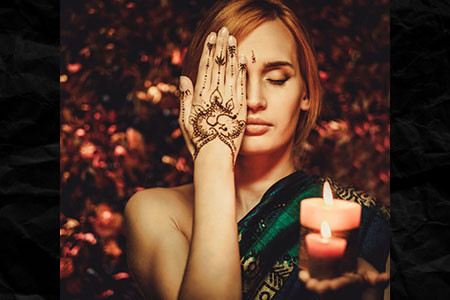religion
Your Beliefs Shape Your Reality
 In metaphysics and alternative spirituality the idea that our belief or faith shapes our reality is a well-known concept. This notion is found again and again in sacred texts, ancient religions, and wisdom traditions.
In metaphysics and alternative spirituality the idea that our belief or faith shapes our reality is a well-known concept. This notion is found again and again in sacred texts, ancient religions, and wisdom traditions.
In The Bible, for example, Jesus says, “With a mustard seed of faith you can move a mountain,” and the Buddha says, “The mind is everything, what we think we become.” These are just two examples among many others.
What is a belief? It is simply a thought that we choose to think again and again. Faith is when a belief becomes established as a pattern.
The mind, our consciousness, is where belief occurs. Whatever we choose to believe about ourselves, and about life, becomes true for us. The thoughts we hold in our mind shapes our reality.
‘Old school’ belief and faith is however a little different and maybe less trendy than the modern idea of the Law of Attraction and our ability to ‘manifest,’ that has become so popular in recent years in spiritual circles and the metaphysical community. Yet, it it is still an important spiritual principle.
Our beliefs and biases work as a filter within the brain to organize our experiences to confirm a belief or bias. For example, if someone has a belief that their partner is aloof, or not present in the relationship, their brain will filter out those experiences where their partner is actually active and present in the relationship.
In this way the brain confirms its own biases. Even if their partner is present, caring, kind and open to communication, their chosen belief will overshadow their reality. Continue reading
Rediscovering The Untouched Soul
 Our soul is always a clean slate when we are born. Knowing this and living accordingly is true spirituality. However, the virgin territory of our soul is often more or less blemished or darkened due to many traumas and challenges throughout our lifetime.
Our soul is always a clean slate when we are born. Knowing this and living accordingly is true spirituality. However, the virgin territory of our soul is often more or less blemished or darkened due to many traumas and challenges throughout our lifetime.
Along our life path, we often lose much of the spiritual innocence we had as children. Instead, we begin to dwell in shadows of darkness in various forms: indifference to the destiny of others, confinement in our own; laziness, vanity, greed, envy, violence, hatred.
None of us can deny having at times dark thoughts or toxic emotions, malicious habits or selfish behaviors. However, no matter how widespread and ingrained the darkness may become in us, it is also certain that something immaculate always persists in some corner of our inner being. Even if it is tiny, there is an eternal point of light within where our higher self always remains pure and original. The sacred we carry within cannot be defiled.
As much as life may have made us callous or cynical, we always have this sacred stronghold inside. Herein lies the hope of those who practice spirituality: to reach that virgin point and rediscover in it one’s original nature.
This original nature, pure and innocent, we have sometimes forgotten to such an extent that we need someone or something to remind us to look inside ourselves to rediscover who we truly are.
We sometimes need someone to explain that we suffer because we have stopped believing in purity, beauty and what is good. We need someone to remind us that our deepest identity is virginal and fruitful, empty and full, both things, however contradictory this may seem.
Seeing Yourself As You Truly Are
 The art of ‘being seen’ begins within. It is not in the eyes, or heart, of an external beholder. It is the grace of being able to see oneself through the Divine Eyes of our Creator.
The art of ‘being seen’ begins within. It is not in the eyes, or heart, of an external beholder. It is the grace of being able to see oneself through the Divine Eyes of our Creator.
Every soul is unique. No two are the same. Each soul emanates from the Supreme Loving Source to offer its unique beauty and pleasure to God in an incomparable, individual way. When we look at ourselves through this lens, the true beauty, light, and power of the spiritual spark of our being shines upon our inner vision.
Relationships offer mirrors too. But what they show vary according to the quality of the reflecting surface. And what we see in them depends upon how well we know, see, and stand in the truth of our own higher self.
For example, if I look at myself in a broken mirror, do I see a crack in my face? I might…if I am not sure of who I am. However, if I know myself to be whole, I can readily recognize that the crack is in the mirror, and not in my face.
Similarly, there are relationships in life that reflect broken images back to us. That does not mean that we are broken, nor that the other person or people involved are broken either. We all have wounds and scars and other gaping holes yet to be healed, or not.
Whatever the case may be, it is the relationship itself that offers up the reflective element. It is the dynamic of exchange that shows itself as either clean, clear, balanced, cracked, smeared, skewed, and so on.
Knowing oneself in truth and wholeness is thus extremely valuable. If we do not possess such certainty of self, we may accept a broken or distorted impression projected by an ill-functioning relationship to be a reflection upon ourselves.
The Three Laws of Grace
 There are three primary Laws of Grace that function under the overarching Law of Attraction. Grace is generally associated with divine support or spiritual help, but in this context it simply means that we are always free to choose again.
There are three primary Laws of Grace that function under the overarching Law of Attraction. Grace is generally associated with divine support or spiritual help, but in this context it simply means that we are always free to choose again.
The Law of Love
The first Law of Grace is the Law of Love. The Law of Love does not refer to feelings, sentiments or emotions. Too often it is assumed that love is a feeling we get when we are with someone, but in metaphysics and spirituality love is not a feeling.
Instead, spiritual love is choosing to accept others as they are and to want what is best for them. What most of us know as ‘love’ today is actually ‘like,’ because to like someone or something is conditional. Real love, on the other hand, has no conditions. It is unconditional.
There is also a common belief about ‘love’ that can be very damaging to relationships. Sometimes we create emotional attachments to future events and declare that “this is love.” Yet, it is impossible to love a future other – either you love a person, or you do not.
When people conjure up extensive images and stories about a future version of another person and attach their mental and emotional attention to these things, they often create a strong sense of painful longing, which creates within them the desire to change the other person.
It is this painful yearning that is the key to understanding, because with the Law of Attraction like always attracts like. Painful longing can only ever attract more pain. It does not even matter how compatible two souls are in this life, if one of them is participating in such a painful longing, then pain will inevitably become the result of the relationship.
Love is unconditional acceptance and there is only one love. Therefore, Buddhists believe one cannot have friends and enemies. If you have enemies then eventually all of your friends will become enemies, and vice versa.
How To Clear Your Karma
 Karmic cycles are repetitive patterns in consciousness that emerge through a belief that is contrary to the laws of the Universe.
Karmic cycles are repetitive patterns in consciousness that emerge through a belief that is contrary to the laws of the Universe.
Some religions and spiritual teachings refer to humanity as the ‘children of God.’ When I use the term ‘God,’ I do not mean some off-world deity that is separate from us mere mortals. To me God is the All. It is the Creative Force. Being a ‘child’ of this Creative Force means that we have the same nature and creative capacity.
Many wisdom traditions also equate words, thoughts and consciousness with God’s ability to create. In other words, thought has a creative function in the Universe. Thoughts are words, images, and stories that are repeated in the mind and they have creative power.
Another way of saying this is that whatever we choose to think or believe about ourselves and others, and about the world around us, ultimately becomes true for us. This is important when discussing how to clear away old karmic patterns.
Karma are patterns of thought that are repeated in the mind and influence how we create our life experiences. Free will means that we have total freedom in what we choose to think and believe.
This is not to say that a specific thought, or even a behavior, is wrong or bad. In fact, the Universe or God always takes us at our own value and says yes to all our thinking and feeling patterns.
Karma is a secondary spiritual law to the Law of Attraction, that allows us to evolve continually into our higher potentials. From an esoteric or spiritual perspective this relates to the expansion of love, joy, and peace within our mind.
Karma and the Law of Attraction are also separated by a protective buffer, in that we often experience less damage than our minds can produce through thought, and we also receive more good than our minds can produce through thought. In metaphysics this is known as the Law of Grace. Continue reading

